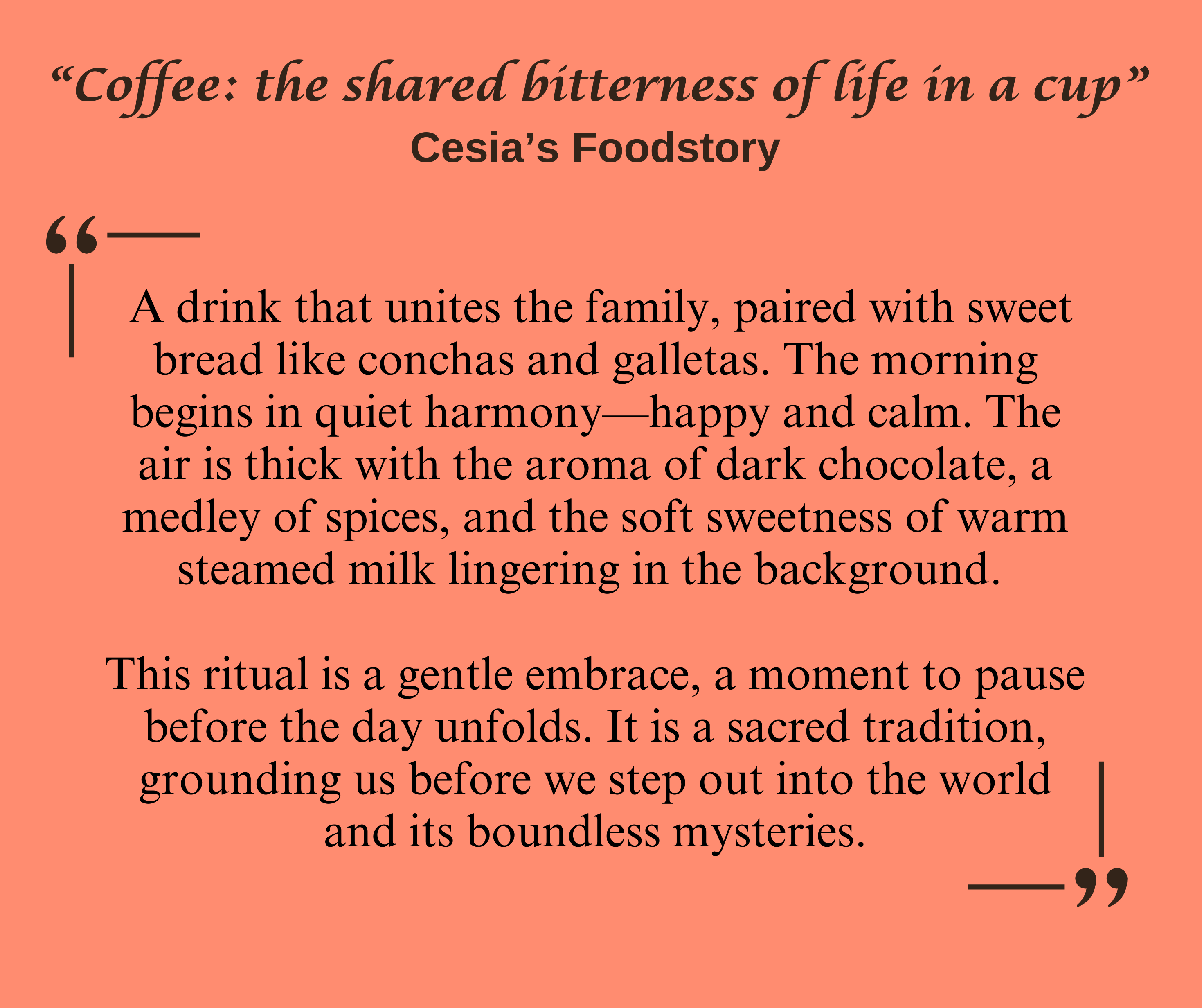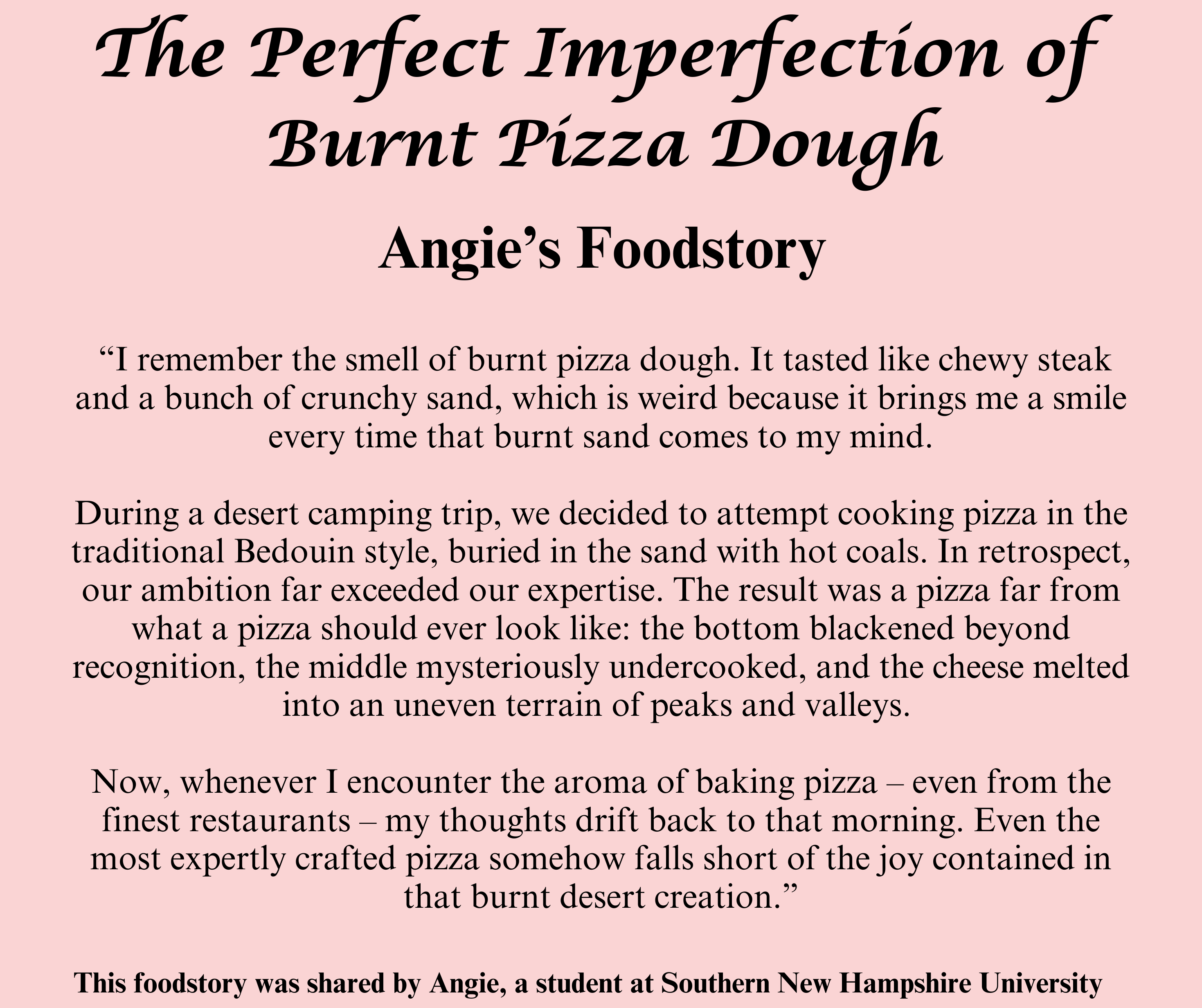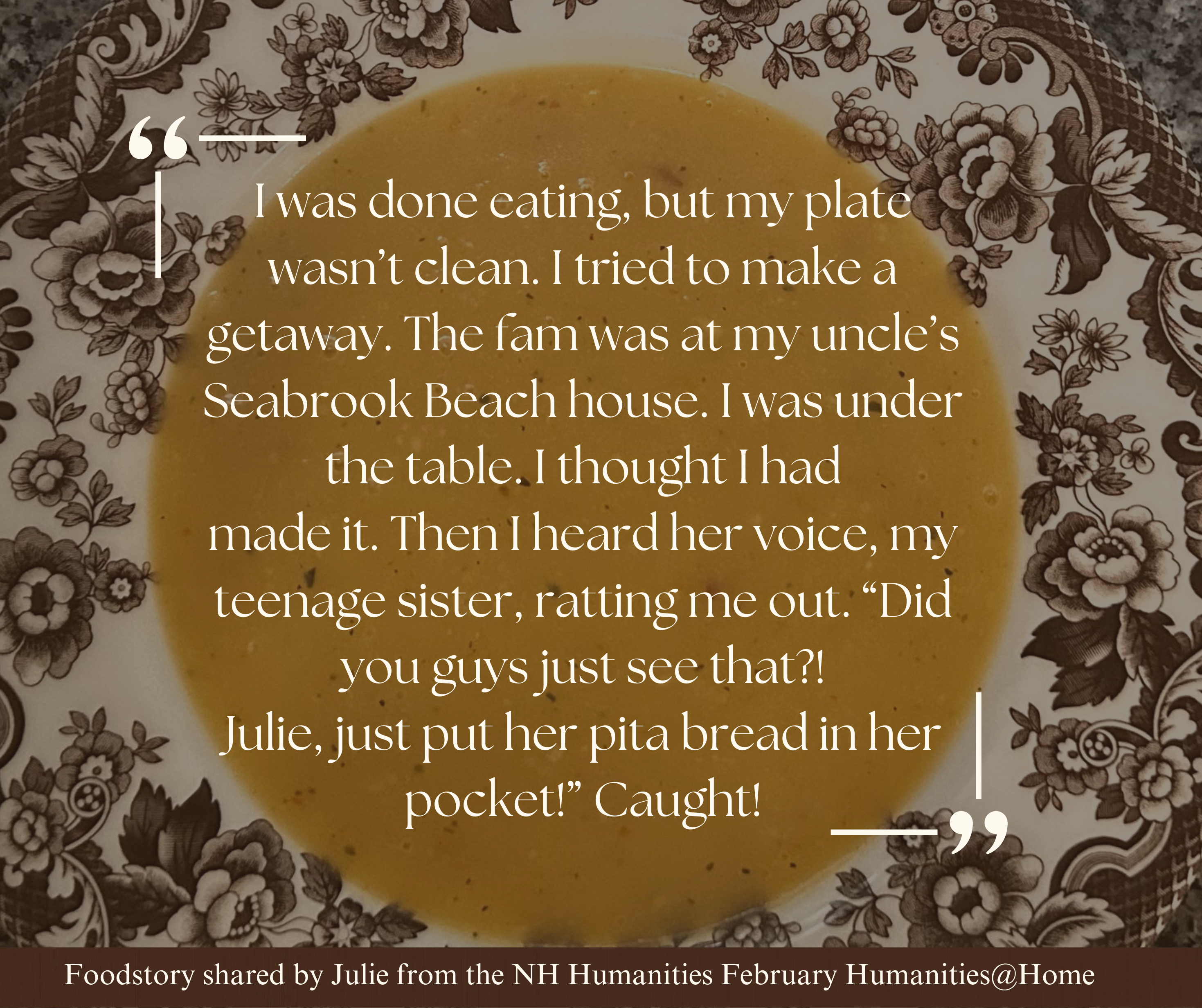by Shanta Lee
Like many of my projects, books, and art, a specific origin point is often hard to pinpoint. If I think about where and how, “Foodstories -We Are What We Eat: Intersections Between Food, Memory, Identity and Our Stories” was born, several moments through time come to mind. I was also inspired to share this because I figured if I am asking many of you to share your stories about food, I needed to come with a ready exchange.

So, here is the food story about Foodstories told across time inspired by one of the latest Foodstories entries:
- Maybe it started with something I could not stand. It was green and looked like…well, I don’t need to finish that sentence. All I know is that for years, guacamole and I never got along just based on seeing it on sight and texture. There was never any kind of relationship. Yet, you wouldn’t know this to be the case because I make really good guacamole. In between choosing the right avocados, mincing a touch of garlic, a dash of sea salt, and sour cream, I sometimes stare in wonder into the bowl. How did this become a thing?
- Naturally, a seed was planted by the 5th annual year of the Slow Living Summit. That summit was something like my first or second year of organizing 2 ½ days of workshops that brought together food, agriculture, business, and art. The year of the fifth summit, we decided to add a storytelling feature and the idea I hatched was, “What’s Eating You? Funny and Entertaining Musings About Food.” It was a short night of storytelling about everyone’s funny, witty, serious, you-name-it, stories about food. Among the funniest of that night? One of the conference attendees shared his story about his love of the place we all knew though he never mentioned the name (and he didn’t need to). We recognized who and what he was describing. Who could mistake the girl with the freckles, her smile, and her red pigtails who seemed to invite us all to get, well, something?
- But really, it started before all of this. I was not yet 10, and the adventure seemed special because Auntie Lena was driving. Summer days and nights like these always had their own agenda that might look something like this: Morning until afternoon, play with cousins or other children in the neighborhood; By evening, if the adults had something else in mind, well, that became the thing. Evenings were always the wildcard. On this summer night, I was not sure what the “something else” in question was except Mama and I would pile into Auntie Lena’s car. They drove around and stopped here, there, and everywhere. The last stop? Some dude’s house about 30-minutes away from home. It must’ve been late because all of the other children were nowhere to be seen. In this dude’s basement—only nameless because children were never introduced—Styrofoam plates and cups appeared along with what we were all going to be eating. There were rules in situations like this, or at least there was back then: (1) Don’t ask what anything is on your plate; (2) Don’t make faces or any sound in reaction to the “thing” in question that might appear on your plate; (3) You must (and this is very important) eat it. Not-yet-10-year-old me was in for a treat. The thing in question that appeared on my plate was indescribable. I remember its form and legs, all scary, on my plate. If you are wondering, I broke all the rules, but the trouble was worth it. I would take another decade to realize that the mystery food was lobster.
- Foodstories and its being wouldn’t be complete without Grandma Leola’s Banana Pudding. Now, here’s the rule about Grandma Leola’s pudding: it is only to be made about once a year, and only during Thanksgiving. I can count on one hand how many times I’ve made it. It would take over 30 years before I made it for the first time attempting to re-trace the steps of my 6-year-old memory. For years, the idea of pudding, let alone bananas, were never my thing. But there was something special about Grandma Leola’s banana pudding. Was it that fact that I was able to have dessert before dinner that day Grandma Leola came over to make banana pudding? Was it the delicious warm layers of vanilla wafers, warm custard filled with sugar, butter, and flour all coming together in my favorite clown cup that I had at 6 years old? Whatever it was, Grandma’s banana pudding, and recreating it years after her death always brought some aspect of her back to me, even if it was for a brief moment.
- The story of the Foodstories is cyclical you could say. And while food can go hand and hand with what we disdain, it can also be filled with love and layers of humor. It was just over a decade ago and the first time I met my current partner. He had been touring the world and was in the process of planning a concert to celebrate his birthday. I was a publicist, and helping him with the media for that concert. During that first round of our connecting, we talked briefly about our encounters with food and race. Damon shared how he was the first in many settings, especially as one of the few non-Chinese individuals to train and perform with the Peking Opera. During this time, the Peking Opera gave him the stage name, Da Men (大門), which is his name in Chinese meaning “Great Gate” speaking to his ability to serve as a gateway between cultures. However, his nickname among the performers backstage was “egg,” speaking to his appearance of being White American on the outside, yet, having a kindred spirit towards Asian culture. I expressed surprise at not having heard that term before while also sharing a term from my childhood – Oreo, often by other children on the playground – due to everything from how I spoke to my taste in music. We both found humor in our experiences while talking about other ways that food might be used as a reference to one’s identity, culture, and other things. Damon then said, Damon said, “We should do an exhibition on food and race.”

The rest isn’t quite history and we re-connected years later but all of these snapshots brings me to this point of now. My 2024-25 National Arts Strategies (NAS) Fellowship which provided me with an opportunity to explore the bridge that food often creates. Whether it is one we want to cross or avoid, there is no denying the human constant of food in our lives and the way intersects with our sense of identity, culture, class, religion, and many other aspects of who we are as people.
For several months, I have been collecting stories from individuals across a range of backgrounds and diversities as it relates to food, memory, identity, and storytelling. For some, the food memories were connected to what launched them into a surprising line of work or creation or food is a snapshot of a time in one’s life either from long ago, or recent.

And this is my invitation to you to share your stories with me for Foodstories. Whether you have something funny to share, serious, a flash of a moment with sharing a meal, any and every kind of story is welcome. Examples are shared below in addition to one of my other Foodstories, They Picked The Leaves From Outside And Fed Us The Banquet on my SoundCloud.
You are also welcome to explore more about Foodstories, partnerships with other organizations, and more on my website, Shantalee.com/foodstories.
Details On How To Share Your Story
What kinds of stories do you want?
The stories can be about a kind of food you don’t care for or don’t like to cook with, it can be about why you decided to enter the food industry as a career and what first drew you to doing this kind of work, or it can be related to the moment that you shared a meal…we are looking for any and everything as it relates to stories. For examples, these stories can be:
- A story about a time you tried to cook something OR a short piece about what you wish you knew how to make;
- A short piece about sharing a meal with someone OR describing your experience making a particular dish (or meal);
- It can be a quirky or funny story;
- It might be something that you learned while working in ANY part of the food industry;
- It can be about a food you do not like or can’t stand;
- Or you might have a story that is very serious and helped to shape how you think about ANY aspect of food or engaging with others.
For some, these stories are connected to warm and cozy memories that we continue to revisit. For others, the door that links food to memory and identity is not to be opened due to the sadness, shame, and other trauma associated with it. For these reasons, you can choose to remain anonymous in your sharing.
How will the stories be used?
Shanta Lee will be sorting through all of the stories to select those that will be featured within the 2025 exhibition in Manchester, NH. The exhibition will be curated with an original soundscape and will feature art from other artists related to the topic of food, memory and storytelling. The stories collected will also be featured in an exhibition catalog intended to serve as an artifact of this project. Additionally, some of these stories will be featured at partner events like at the New Hampshire Business Committee for the Arts (NHBCA)’s annual gala, and at Radically Rural’s fall 2025 conference. Shanta Lee is also exploring ways of sharing the stories through her SoundCloud channel and on her website.
How long should my story be? And I need some help coming up with stories, what can I write about?
Your stories can be a flash piece: 6-words or 2 sentences in length. Or you can write a story that is 65 – words to 350 – 500 words in length. To share your story, go to this link: Share: Food and Self/Identity – Shanta Lee
Need ideas? Here are some prompts to help you share your story:
I remember the smell of ___________. It tasted like______________. This is why now…. (make sure to include details of a dish being cooked or prepared and your relationship to it now)
Share a recipe and the story of how you learned to cook the item you are sharing about. Or share the story attached to it if it was passed down in your family.
I can’t stand _________________ , this is why…
I remember learning how to make _____________ for the first time….
I grew up eating……
Share a memory about hearing or using a food term related to race or cultural heritage. What do you remember about the details? What was the context?
The first time I tried ___________, I was in _________________ with ….
Other ideas include:
Sharing a meal with someone
A food item that you really don’t like too much and why
A food item or dish that took you a long time to try
Or do you work in the food industry,food sustainability, food agriculture (farming), etc.? Again, feel welcome to use any of these OR just come up with a riff of your own story:
What is your first memory of knowing that you wanted to work within the food industry – either as a restauranter, chef, or in any part of food – related work – and why?
What is your favorite cuisine to prepare and what attracted you to this style of food?
“My most memorable meal that I enjoyed was _____________. I remember that I was with __________ and….”
“I remember the very first time I cooked ____________ and….
What is the unusual history or fact about this food or an ingredient that you like to use? Why are you drawn to it?
Do you have a particular story to share about a discovery you made related to food? Share details of what that discovery was like for you
Your story can be a personal one that you wish to share about a dish you love or a dish that you tried and really don’t want to have again.
Who Is Shanta Lee?
Shanta Lee is an award-winning writer of poetry, creative nonfiction, journalism, a visual artist, and a public intellectual actively participating in the cultural discourse. Foodstories is part of her National Arts Strategies Creative Community Fellowship. Learn more about Shanta Lee on her website.
The Co-op welcomes guest authors and diverse voices on a wide variety of topics. Got an idea? Pitch it to us!

